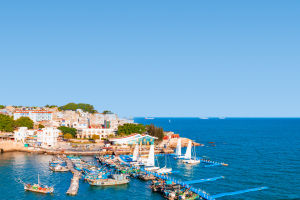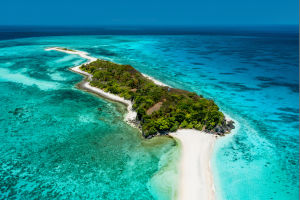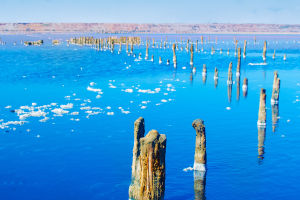When it comes to the Republic of Montenegro, the city of Podgorica, as the capital, is incomparable to other ancient cities in the country.
One remarkable aspect is its well-preserved medieval town, which stands as a testament to its historical significance.
In fact, the medieval town of Podgorica is considered one of the best-preserved in the entire Adriatic Sea region, earning it the distinction of being a UNESCO World Heritage Site.
However, when exploring Montenegro, one cannot overlook the allure of Kotor. Derived from the ancient Greek word "Dekatera," meaning "hot," Kotor is a land of enchanting medieval labyrinths, adorned with museums, churches, cafes, scattered squares, and Venetian palaces.
In recent years, Kotor has witnessed a significant increase in the number of visitors, drawn not only by the natural beauty of the Bay of Kotor but also by its rich historical and cultural heritage.
The Cathedral of St. Tryphon, built in 1166 in the heart of the old town, and the ancient 4.5-kilometer-long city walls constructed during Venetian rule, are iconic landmarks that have become synonymous with Kotor's tourism.
Additionally, the nearby islands of St. Stephen and Our Lady of the Rocks, located along the Pelasto Coast, are also popular tourist destinations within close proximity to Kotor.
St. Stephen's Island, with its unique topography, is like a mirage along the Adriatic coast—a breathtaking and iconic image that represents Montenegro in its true essence.
The island, connected to the mainland by only a narrow strip, has thrived as a vibrant fishing village since the 15th century.
The island's white sandy beaches, crystal-clear blue waters, secluded ambiance, and breathtaking views created a natural resort atmosphere. Over time, it has evolved into a haven for politicians, businessmen, European royalty, and even movie celebrities.
From the 1960s to the 1970s, St. Stephen's Island experienced its heyday, rivaling other renowned coastal resort cities. Presently, the entire island is maintained by the Aman Resorts group, offering luxurious accommodations, including private pools and enhanced security measures.
For the average tourist, observing this dream-like island from a vantage point is highly recommended. The lush green trees interspersed among white walls and red tiles, encircled by the azure Adriatic Sea and verdant coast, create a captivating panorama.
The island's peculiar topography, which appears as though it was artificially reclaimed, leaves spectators in awe of its divine beauty.
Moving along the Budva Riviera, one encounters Sveti Stefan, an island connected to the mainland by a narrow isthmus. This charming village has been inhabited since the 15th century, originally serving as a humble fishing settlement.
Sveti Stefan gained widespread recognition when it was transformed into a luxurious resort in the 1950s, attracting illustrious visitors such as Marilyn Monroe and Sophia Loren.
Despite experiencing a decline after the breakup of the Federal Republic of Yugoslavia in the late 20th century, Sveti Stefan has reclaimed its status as a vacation paradise.
The village features two beautiful pebble beaches on either side of the isthmus, which, although accessible to the public, restricts access to the original village to guests staying at the prestigious Aman resort.


